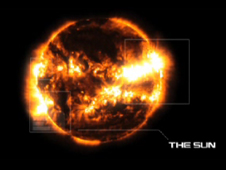
India's maiden solar mission Aditya-L1 reached the L1 point, located roughly 1.5 million km from earth enabling the spacecraft to view the Sun continuously, on January 6, 2024. (A file photo)
BENGALURU (PTI): ISRO has successfully deployed the magnetometer boom on board the Aditya-L1 satellite to measure the low intensity interplanetary magnetic field in space.
The six metre-long magnetometer boom is deployed in the Halo orbit at the Lagrange point L-1, on January 11, the space agency said, noting that the boom had been in stowed condition for 132 days since the Aditya-L1 launch.
According to ISRO, the boom carries two state-of-the-art, high-accuracy fluxgate magnetometer sensors that measure the low intensity interplanetary magnetic field in space.
"The sensors are deployed at distances of 3 and 6 metres from the spacecraft body. Mounting them at these distances minimises the impact of the spacecraft generated magnetic field on measurements, and using two of them assists precise estimation of this influence. The dual sensor system facilitates cancelling out the spacecraft's magnetic influence," it said.
The boom segments are constructed from carbon fibre reinforced polymer and serve as interfaces for the sensor mounting and mechanism elements, ISRO said.
The articulated boom mechanism comprises five segments interconnected through spring-driven hinge mechanisms, allowing for folding and deploying actions, it was noted.
India’s maiden solar mission Aditya-L1 reached the L1 point, located roughly 1.5 million km from earth enabling the spacecraft to view the sun continuously, on January six, 127 days after it was launched on September 2, 2023.
The solar observatory at L1 is aimed at “Observing and understanding the chromospheric and coronal dynamics of the Sun” in a continuous manner.
 Previous Article
Previous Article Next Article
Next Article












The Indian Air Force, in its flight trials evaluation report submitted before the Defence Ministry l..
view articleAn insight into the Medium Multi-Role Combat Aircraft competition...
view articleSky enthusiasts can now spot the International Space Station (ISS) commanded by Indian-American astr..
view article